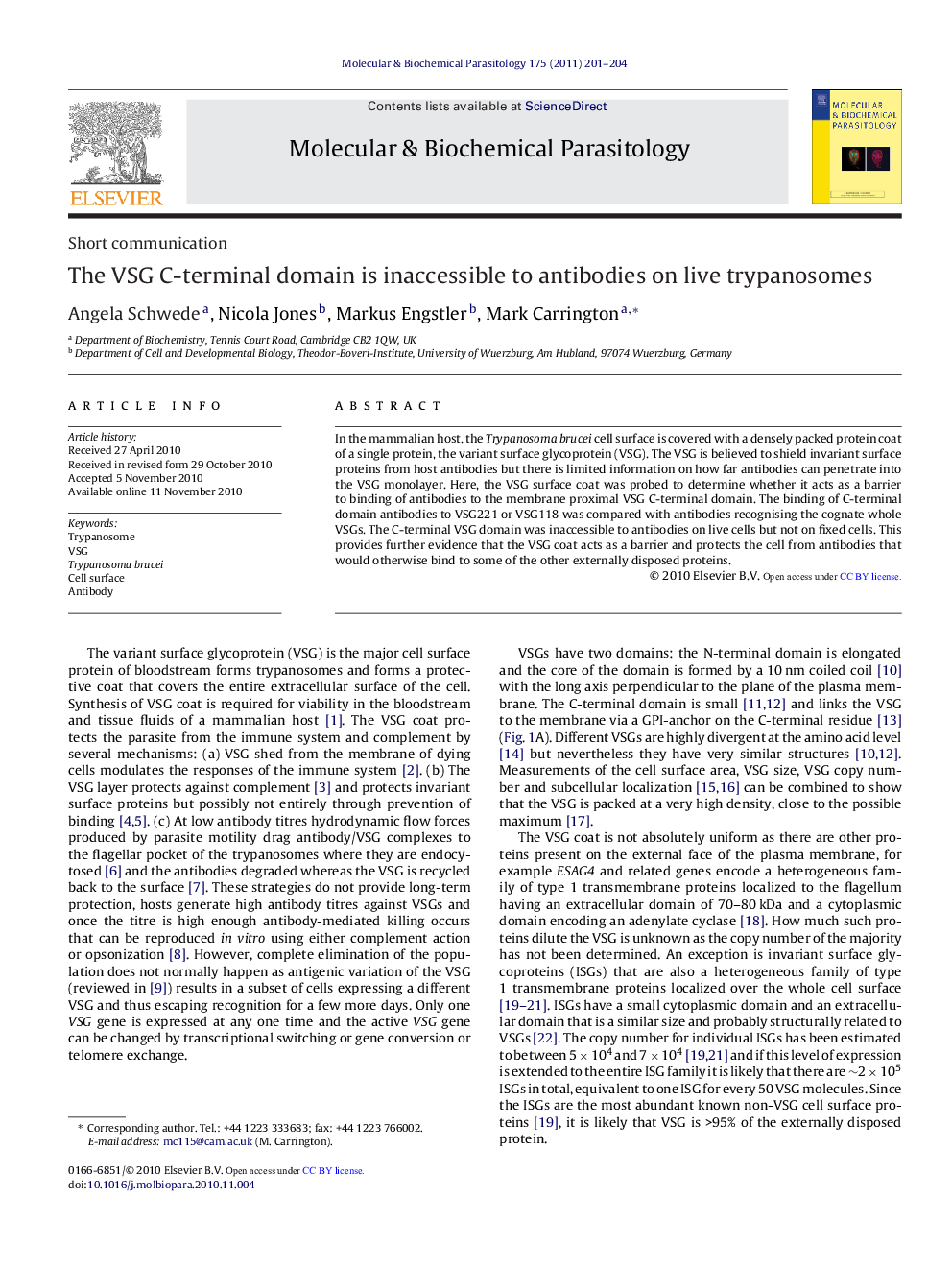| Article ID | Journal | Published Year | Pages | File Type |
|---|---|---|---|---|
| 5915686 | Molecular and Biochemical Parasitology | 2011 | 4 Pages |
In the mammalian host, the Trypanosoma brucei cell surface is covered with a densely packed protein coat of a single protein, the variant surface glycoprotein (VSG). The VSG is believed to shield invariant surface proteins from host antibodies but there is limited information on how far antibodies can penetrate into the VSG monolayer. Here, the VSG surface coat was probed to determine whether it acts as a barrier to binding of antibodies to the membrane proximal VSG C-terminal domain. The binding of C-terminal domain antibodies to VSG221 or VSG118 was compared with antibodies recognising the cognate whole VSGs. The C-terminal VSG domain was inaccessible to antibodies on live cells but not on fixed cells. This provides further evidence that the VSG coat acts as a barrier and protects the cell from antibodies that would otherwise bind to some of the other externally disposed proteins.
Graphical abstractThe VSG coat of Trypanosoma brucei prevents access of antibodies to the VSG C-terminal domain.Download high-res image (121KB)Download full-size imageResearch highlightsⶠAntisera raised against recombinant VSG C-terminal domains. ⶠAnti-VSG C-terminal domain sera recognise fixed but not live cells. ⶠSupport for model where diffusion barrier is at the base of the VSG N-terminal domain.
